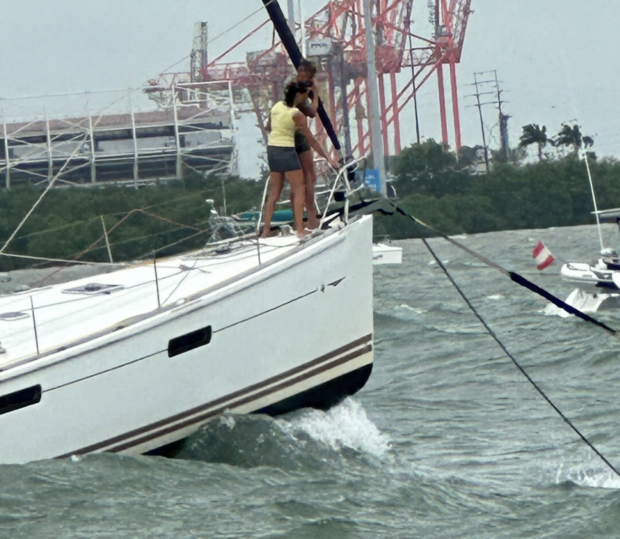by Bob Osborn
with images from Sailing Fair Isles’ YouTube vlog
In June, hurricane Beryl, the strongest hurricane ever to be recorded that early in the season in the SE Caribbean and the earliest category 5 hurricane ever recorded, decimated much of the Grenadines and the islands just to the north of Grenada.
The strength of the storm was a direct result of ocean waters to the east that were particularly warm for that time of the year. While NOAA had forecasted this hurricane season to be active, the severity of the storm and how early in the season it hit, was a surprise to many.
While the big island of Grenada sustained relatively little damage, Chris Parker of Marine Weather Center, widely regarded as an expert in Caribbean Weather, said that had Beryl’s path been even 25 miles farther to the south, the island of Grenada proper would have seen very severe damage.
While Grenada has not been hit as frequently as many islands to the north, it is no stranger to destructive storms. It received a direct hit by hurricane Ivan in 2004 with the eye passing about 7 miles south of the island and the strongest part of the storm, the north wall, leaving a swath of destruction.
Trinidad, due to its proximity to the equator, has not had a direct hit since 1933 and that was only a category 1 storm. Chris went on to say that the only place that is arguably safer in the eastern Caribbean would be Venezuela, as it is even closer to the Equator, and any storm hitting that coastline would have to go over the mountains of Trinidad which would weaken the storm considerably. Unfortunately, Venezuela is not a practical option as most insurance policies prohibit travel to that area.
When Beryl was approaching the islands in June, nearly 200 boats made a run for Trinidad, less than 100 miles to the south and while they found that they were welcome there, the few marinas in the area were already full so these refugees had to leave the island after the storm passed.
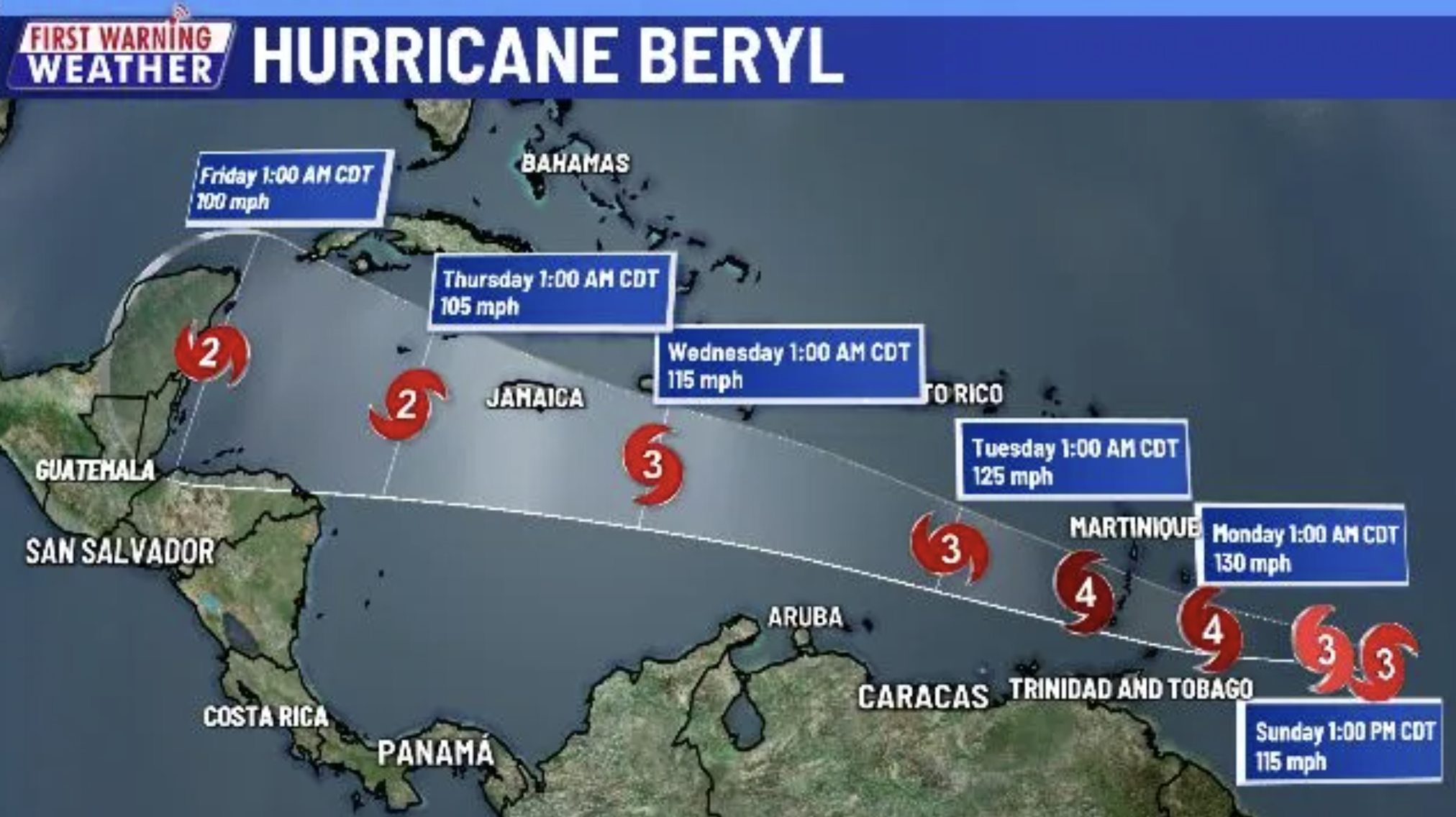
For cruisers staying aboard for the summer, as long as you are willing to move when a storm is forecast for your area, it is reasonable to spend the hurricane season in hurricane prone areas. However, if you wish to leave your boat on the hard, the risk of a strike, while not every year, is not acceptable to many.
In the past insurance companies have said that as long as you are “out of the hurricane box” from June to November, you would be covered. However, due to greater losses over the years, and the expected increasing frequency and strength of storms, many are now saying that coverage may allow you to be most anywhere but that coverage excludes named storms, regardless of where the vessel is located.
Conventional wisdom has been that the best place to put a boat during a hurricane, if you are in an at-risk area is to tie up in the mangroves. While Beryl approached dozens sought shelter in what was widely believed to be a safe “hurricane hole” on the island of Carriacou. When the eye passed right over the island, all the boats tied up in the mangroves were swept into a jumble only to be tossed the other way after the eye of the storm passed. Virtually all of the boats were a total loss.
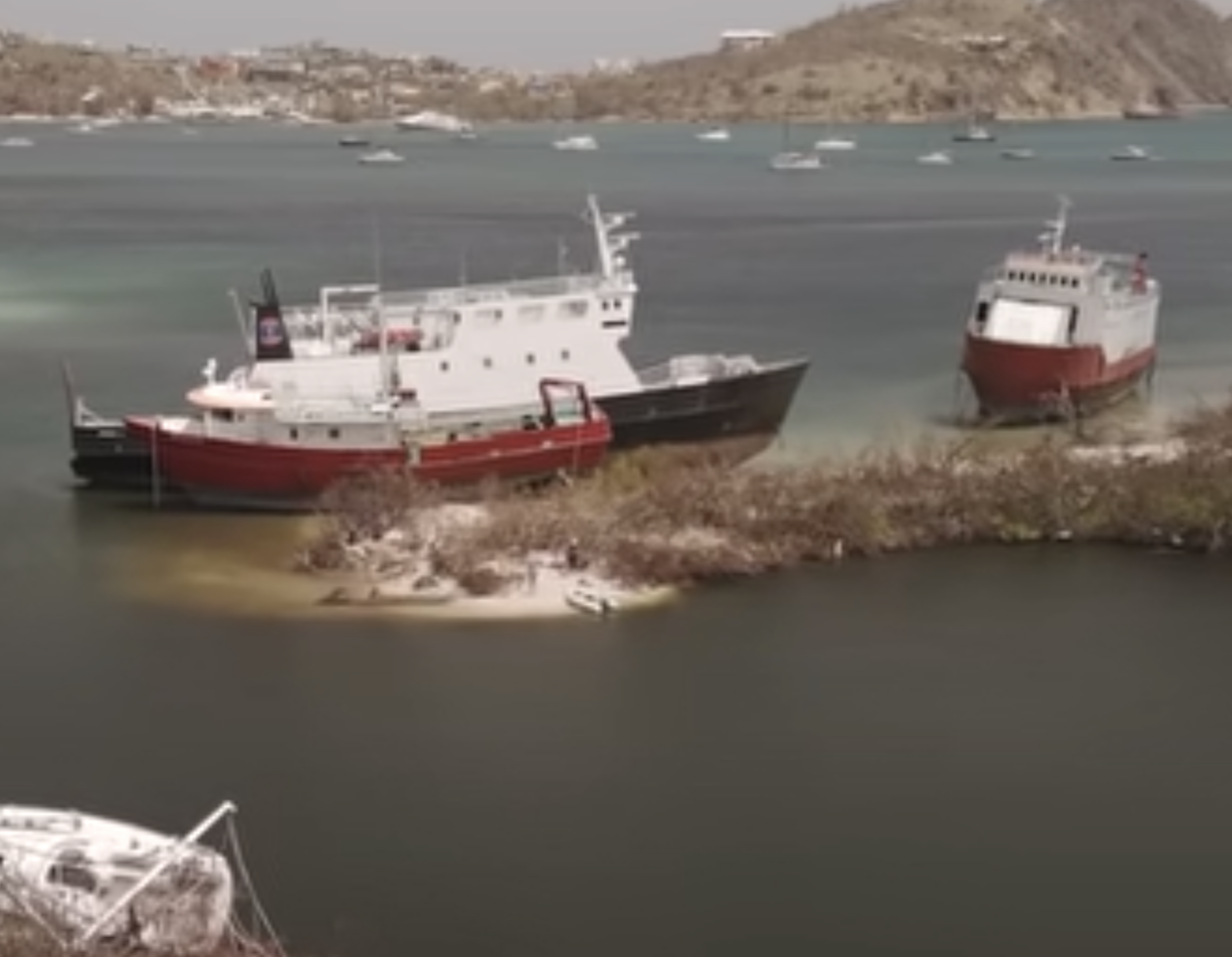
Virtually nothing survived in Beryl’s wake. Even commercial ships were swept up on the beach and in a number of cases, taking cruiser’s boats with them.
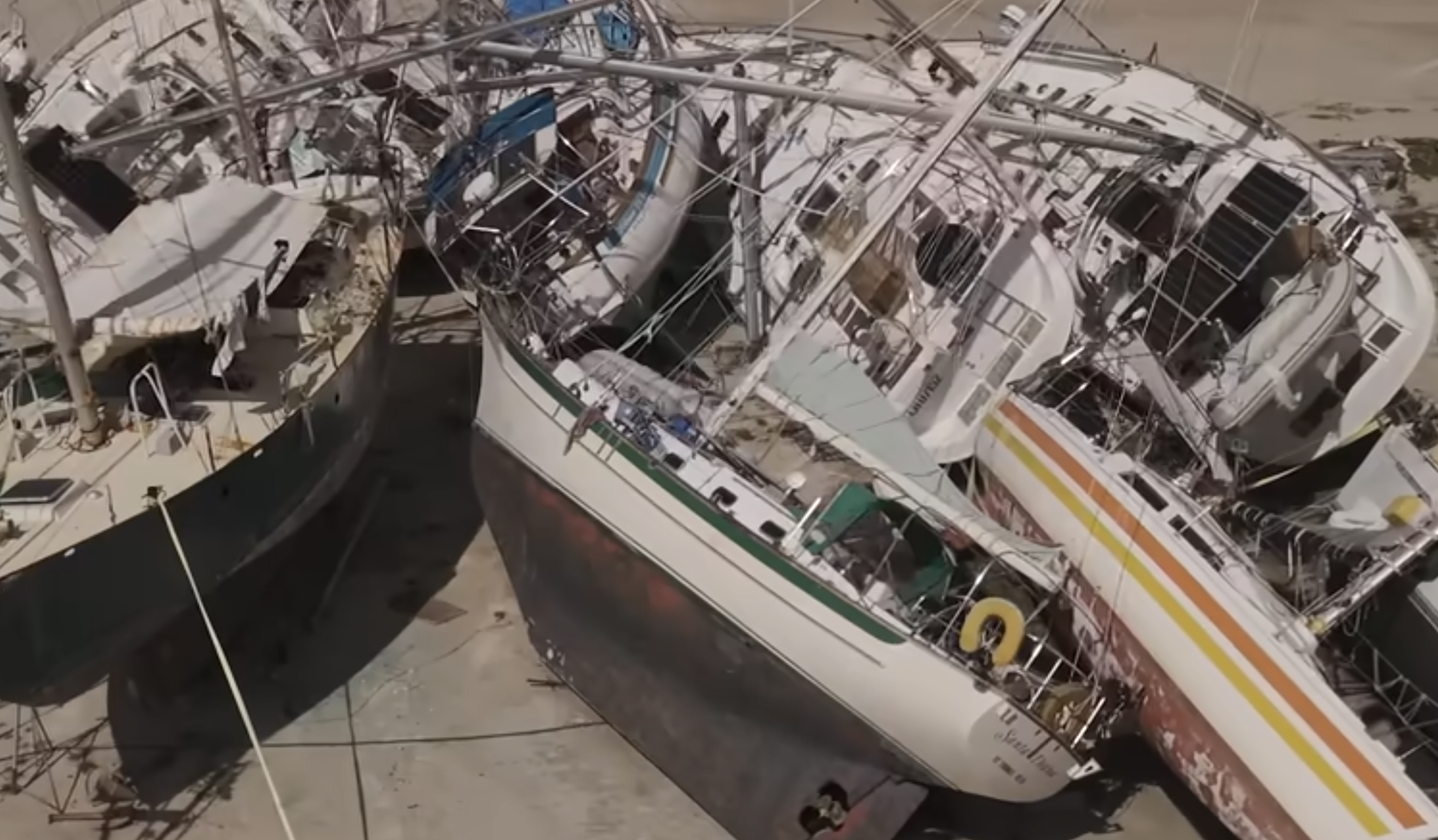
Those boats stored on shore suffered a similar fate, knocked down like dominoes.
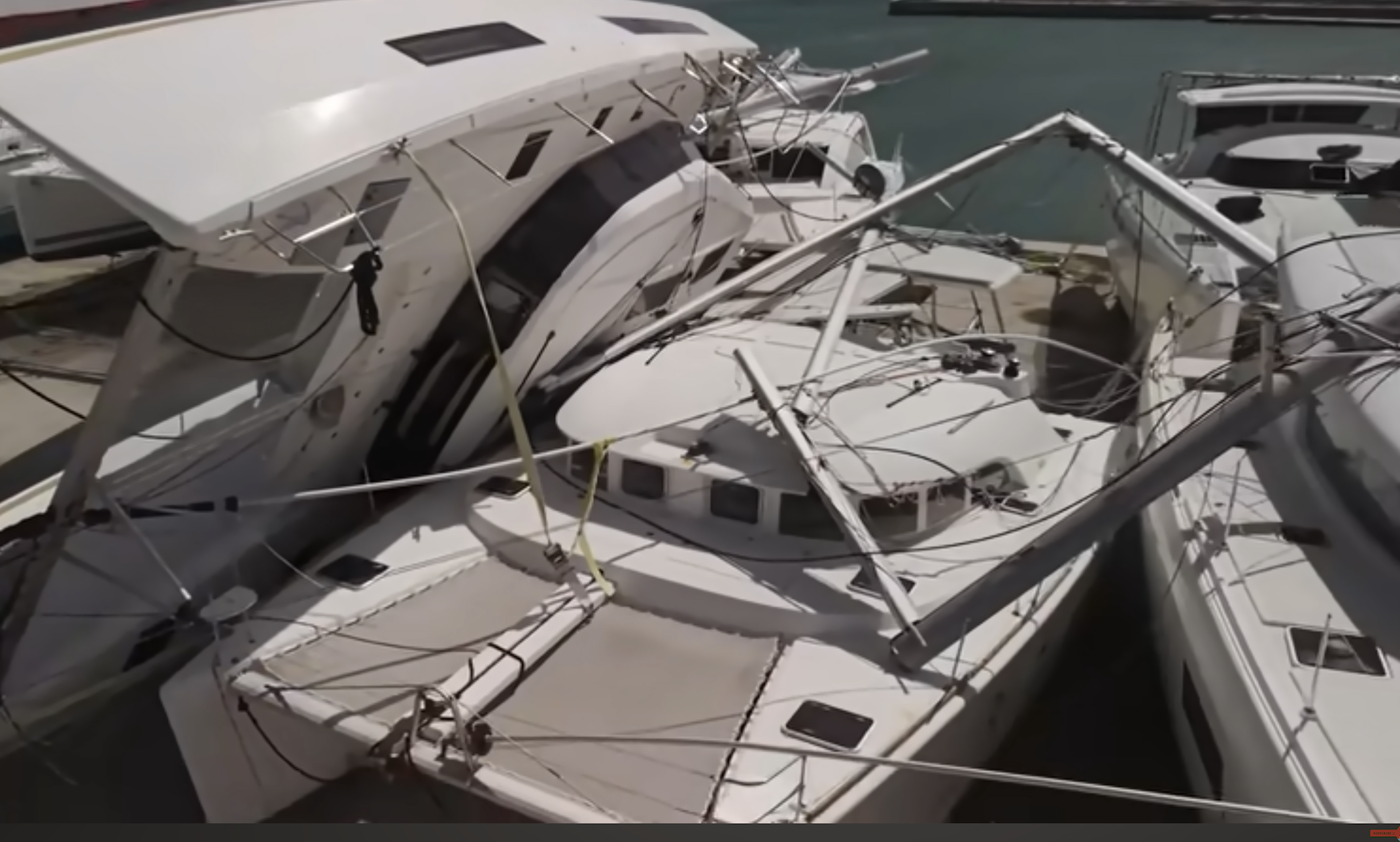
Catamarans suffered their own special fate, flipped over, one on top of the other.
After a dozen years of bringing Pandora, our Aerodyne 47 sloop, back and forth from New England to points, south, I decided to avoid the long north/south run and keep her south for some much needed maintenance last spring and chose a marina in Trinidad. I have been very happy with that decision because of the relative safety of Trinidad but also because of the high quality of the work that I have received.
While many will say “I have left my boat in central east Caribbean for many years without a problem”, I am not willing to take the chance of a loss, even if any given area has not been hit for years.
The analogy that I use when I hear such an answer is “if you knew that you had a one in ten chance of being struck and killed on a busy street, would you walk across it with a bag over your head?” As you would expect, most say “no way” but for some reason they do not see the same risk in leaving their boat, potentially in harm’s way, thousands of miles away with the odds of a major storm hit is always an option.
All you have to do is to look at images following a direct hit of The Bahamas, BVI, St Martin, Dominica, and most recently several islands in Grenada, the Grenadines, Carriacou and other southerly islands, all of which have been decimated in recent years to conclude that the risk is high that you will lose your boat and perhaps do so without any insurance coverage.
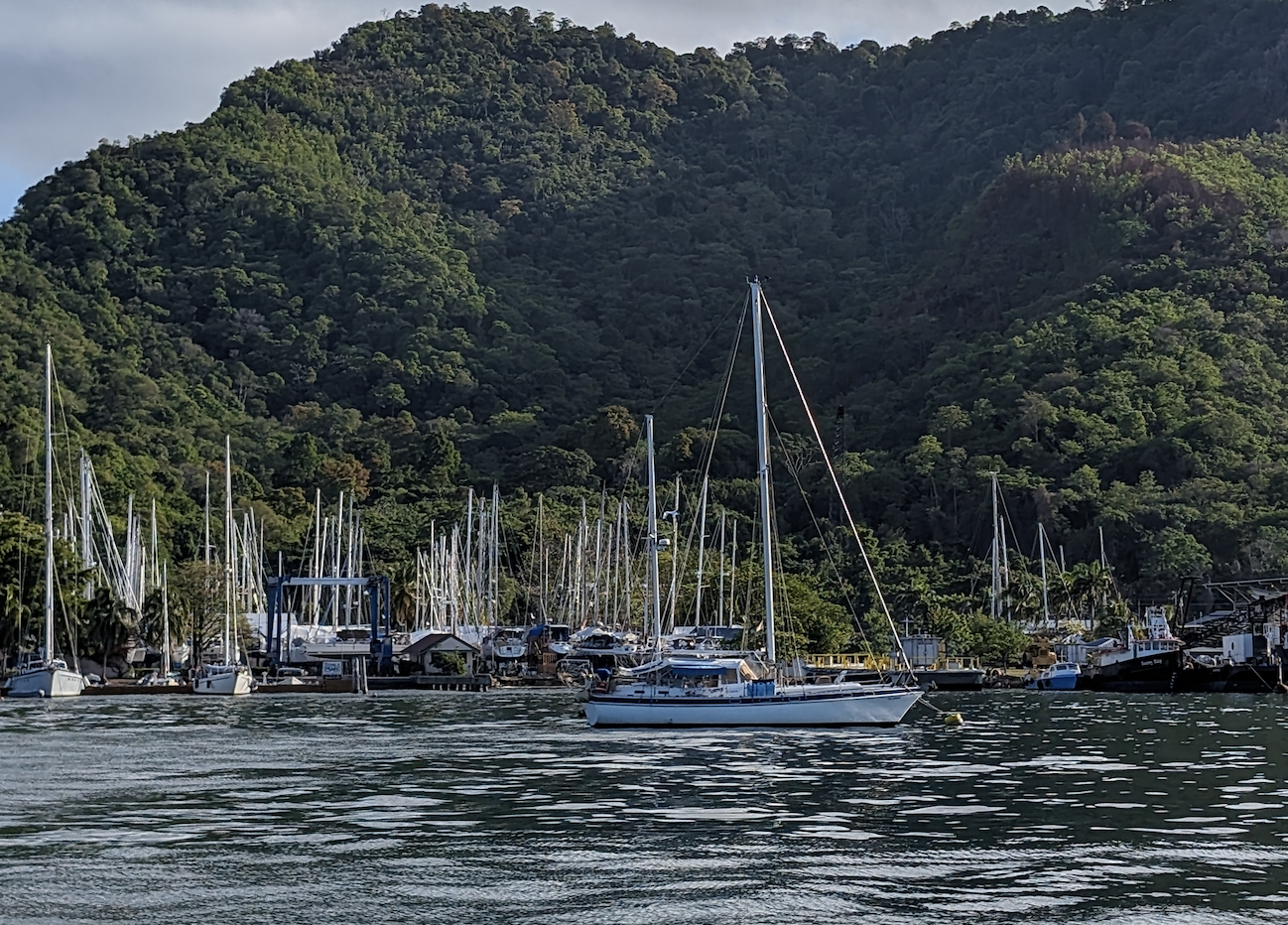
Trinidad is rarely hit by tropical storms.
There is no doubt that the destruction caused by Beryl will have a profound effect on the yacht insurance business already working to adjust to a changing climate and surely the restrictions on yachts will only get more difficult in the coming years. As careful as owners may be, the cost of insuring a boat, regardless of how focused owners are on keeping their boats safe, will continue to rise.
What will be the effect of increasingly powerful storms and the effect that losses will have on insurance coverage for cruisers in the Caribbean?
In the wake of Beryl, in the face of warming ocean waters likely spawning more powerful storms, to keep a boat anywhere within the hurricane belt is increasingly risky and only time will tell what effect this will have on cruisers who wish to roll the dice during the hurricane season.
Bob Osborn sails a 2007 Aerodyne 47’ sloop with his wife Brenda. They have sailed much of the US East Coast, several seasons in the Bahamas, a season in Cuba and most recently the islands of the Eastern Caribbean from the US VI south to Trinidad. He is the immediate past president of the Salty Dawg Sailing Association as well as Rally Director and Port Officer for the rally to Antigua. Bob has been keeping a blog for nearly 15 years and publishes regularly. Www.sailpandora.com
Resources:
For a description of this effect, and why hurricanes do not occur close to the equator, check out this link.
Chris Parker, Marine Weather Center.
A number of images in this article are from the YouTube couple, Sailing Fair Isles.
Salty Dawg Sailing Association is a not-for-profit blue water sail training organization and runs the largest rally to the Bahamas and Caribbean from the US. www.saltydawgsailing.org

